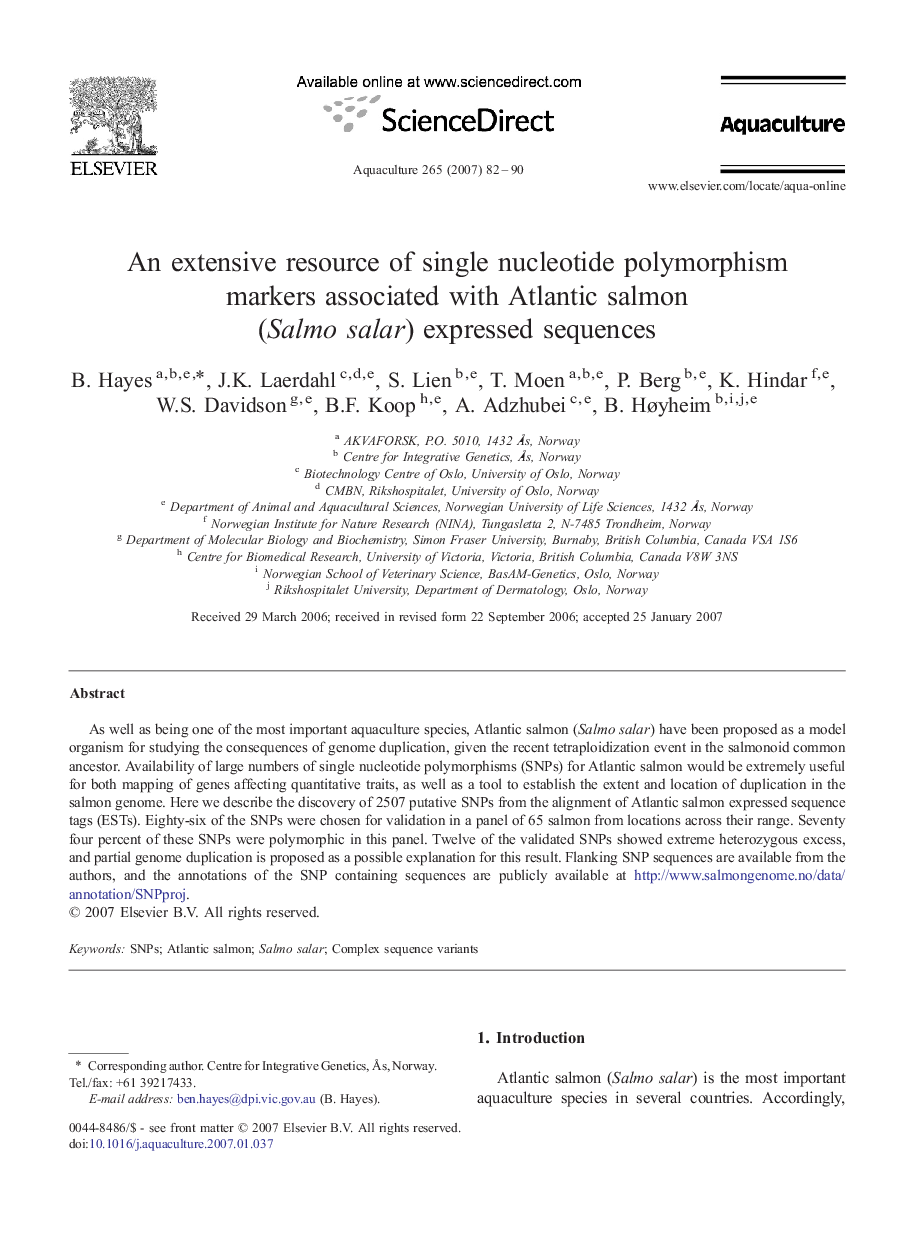| Article ID | Journal | Published Year | Pages | File Type |
|---|---|---|---|---|
| 2425613 | Aquaculture | 2007 | 9 Pages |
As well as being one of the most important aquaculture species, Atlantic salmon (Salmo salar) have been proposed as a model organism for studying the consequences of genome duplication, given the recent tetraploidization event in the salmonoid common ancestor. Availability of large numbers of single nucleotide polymorphisms (SNPs) for Atlantic salmon would be extremely useful for both mapping of genes affecting quantitative traits, as well as a tool to establish the extent and location of duplication in the salmon genome. Here we describe the discovery of 2507 putative SNPs from the alignment of Atlantic salmon expressed sequence tags (ESTs). Eighty-six of the SNPs were chosen for validation in a panel of 65 salmon from locations across their range. Seventy four percent of these SNPs were polymorphic in this panel. Twelve of the validated SNPs showed extreme heterozygous excess, and partial genome duplication is proposed as a possible explanation for this result. Flanking SNP sequences are available from the authors, and the annotations of the SNP containing sequences are publicly available at http://www.salmongenome.no/data/annotation/SNPproj.
